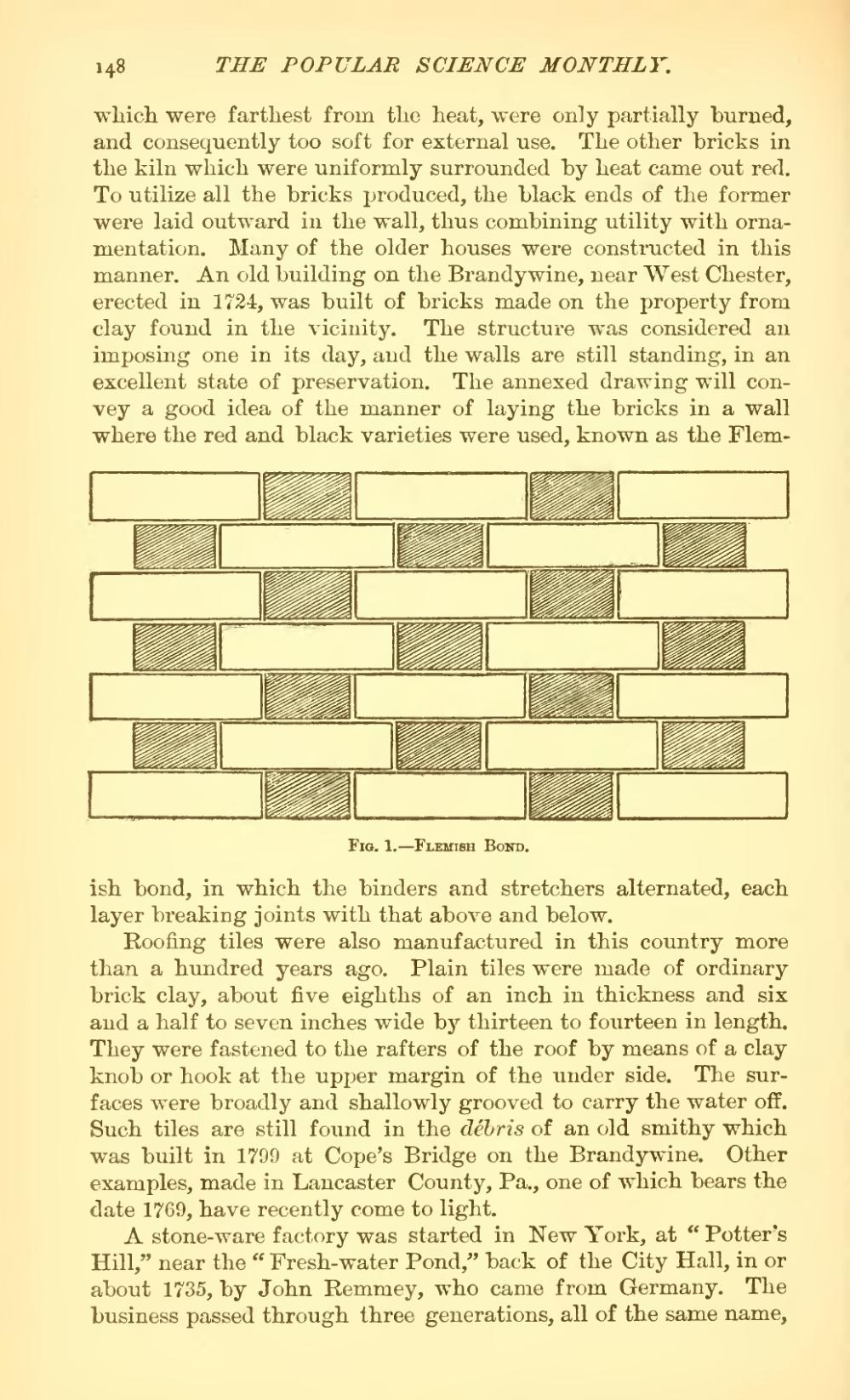which were farthest from the heat, were only partially burned, and consequently too soft for external use. The other bricks in the kiln which were uniformly surrounded by heat came out red. To utilize all the bricks produced, the black ends of the former were laid outward in the wall, thus combining utility with ornamentation. Many of the older houses were constructed in this manner. An old building on the Brandywine, near West Chester, erected in 1724, was built of bricks made on the property from clay found in the vicinity. The structure was considered an imposing one in its day, and the walls are still standing, in an excellent state of preservation. The annexed drawing will convey a good idea of the manner of laying the bricks in a wall where the red and black varieties were used, known as the Flemish

Fig. 1.—Flemish Bond.
bond, in which the binders and stretchers alternated, each layer breaking joints with that above and below.
Roofing tiles were also manufactured in this country more than a hundred years ago. Plain tiles were made of ordinary brick clay, about five eighths of an inch in thickness and six and a half to seven inches wide by thirteen to fourteen in length. They were fastened to the rafters of the roof by means of a clay knob or hook at the upper margin of the under side. The surfaces were broadly and shallowly grooved to carry the water off. Such tiles are still found in the débris of an old smithy which was built in 1799 at Cope's Bridge on the Brandywine. Other examples, made in Lancaster County, Pa., one of which bears the date 1769, have recently come to light.
A stone-ware factory was started in New York, at "Potter's Hill," near the "Fresh-water Pond," back of the City Hall, in or about 1735, by John Remmey, who came from Germany. The business passed through three generations, all of the same name,

